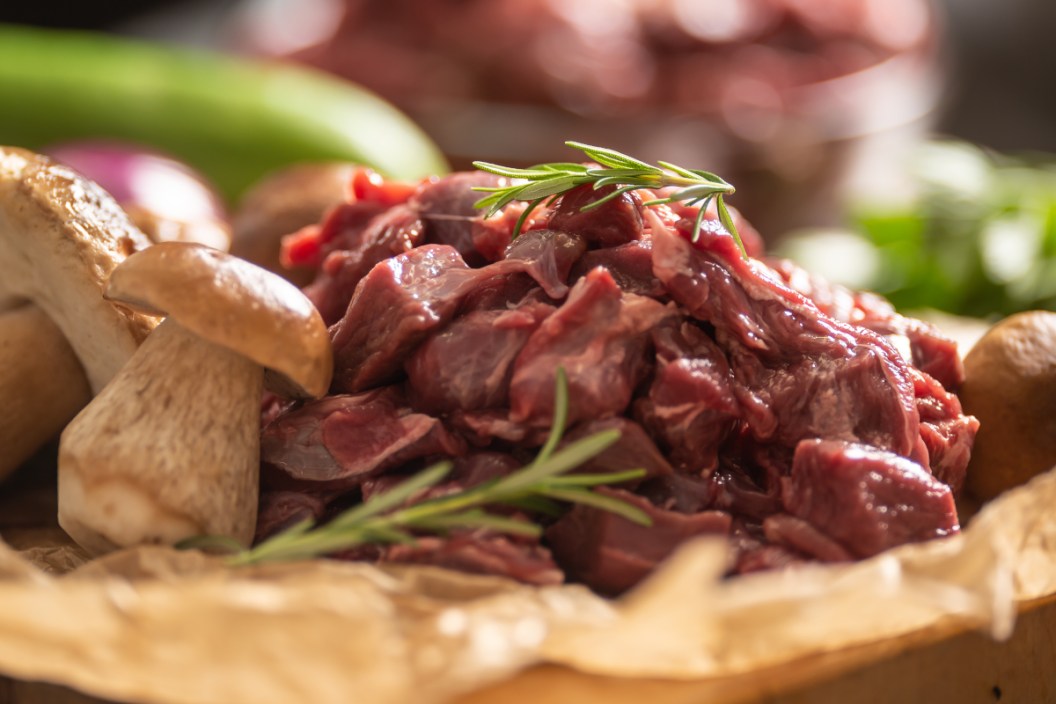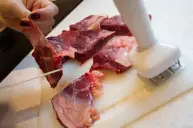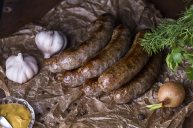I'm a meat hunter. I hunt for the sole purpose of eating the meat.
I've never cared about the size of the horns or antlers. I've never handed a taxidermist any money.
I derive much more pleasure from cooking, sharing, and eating the meat than staring at an inedible head on a wall.
Don't get me wrong, I am impressed with my friends' mounts and appreciate their desire for trophies, but I have never had an interest in the practice.
The closest I get to having my big game animals mounted is cutting the horns off the larger bucks and bulls and hanging them in my garage as hat racks.
For me, it's all about the meat, man.
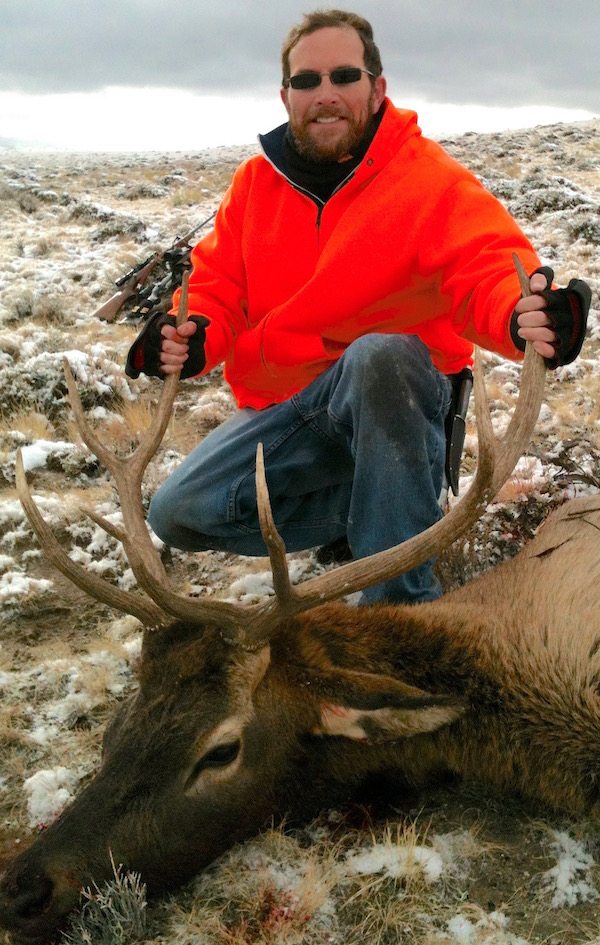
Taxidermy is expensive. My "trophy" is hearing my 5-year-old son exclaim, "I love antelope!" after eating a bunch.
Seriously, my wife and I sometimes wonder how that kid walks around because we rarely witness him actually eating real food. So, watching him eat ALL of his antelope steak, then requesting more, is as great a trophy as I can imagine.
My dad's biggest wild game tips:
My dad taught me to be a meat hunter. He was an expert—and very successful—hunter. And, he took great pride in caring for the meat from the second the animal went down to the last perfectly prepared bite on our plates. I like wild game so much because my dad cooked it so well.
He taught me about what makes a good venison steak, and I want to pass that on to you. Keep in mind that all the following "suggestions" are pretty hard to just go out and do, even for the best hunters. But, they are goals to strive for.
Also keep in mind that all the following tactics are attainable. It all could happen for you if you decide that maintaining the high quality of the meat is the most important aspect of hunting.
Intel makes good game meat.
Perfectly prepared venison starts with the hunt itself, obviously.
Hunts should be planned with the taste of the meat in mind. Don't show up on opening day and drive around on two-tracks lobbing off pot shots at distant specs.
Scout the area in the late summer/early fall. Get out and walk the draws and the stands of trees. Find the meat!
When you find the meat, watch it for as long as you can. Figure out what it does all day. Envision this:
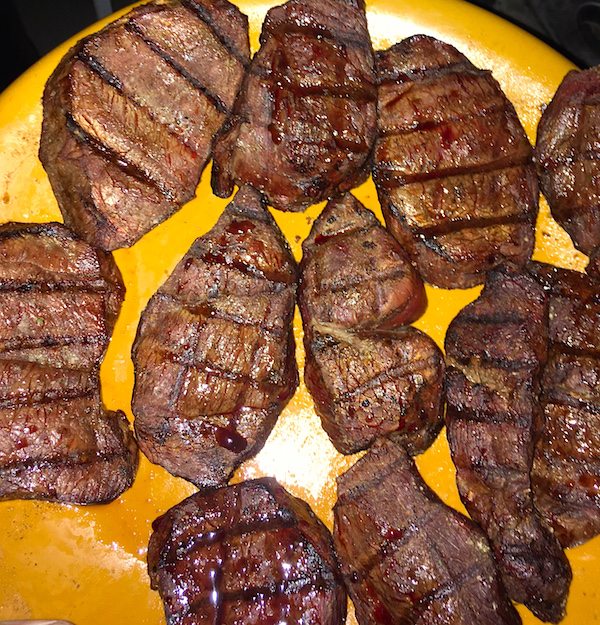
Instant death works wonders.
With the extra "luck" you just gave yourself, plan an opening morning meat harvesting sting operation, or tactical strike, if you will.
Be amongst the meat when it wakes up in the morning, if possible. Take them out before they sense you. Most importantly, make sure your shot kills them instantly.
Neck and head shots are the preferred meat-harvesting shots, but also the most risky. You don't want them to run.
If they flee, that means their bodies released adrenaline. Adrenaline affects the taste of meat, and contributes to that "gamey" taste some of us hate.
Buying a game winch makes good sense.
Now, you're going to want to get to the downed meat as quickly as possible. Start field dressing as soon as you can, because heat is the enemy of meat.
You can grip-n-grin for your Facebook photo after you get the animal opened up and cleaned out.
Drag it to your vehicle and hoist it up into the air on your custom-made, swiveling game winch that fits in your receiver hitch.
What? You don't have a custom-made, swiveling game winch that fits in your receiver hitch? Get one if you're serious about meat hunting.
If you need a game winch, let me know. My brother-in-law builds them.
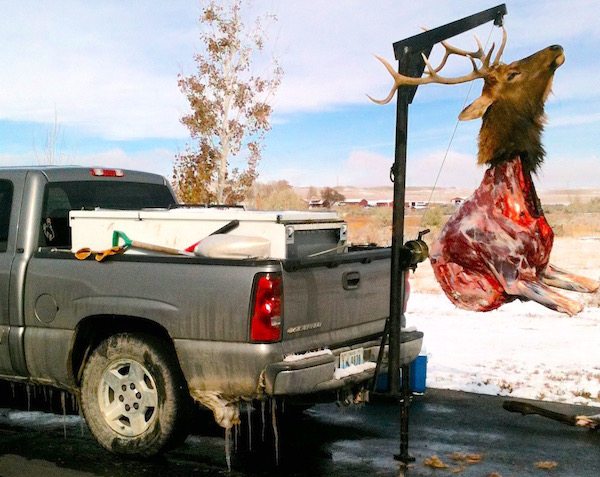
Use a knife blade that can keep an edge, and have a portable knife sharpener, too.
Cleanliness is everything.
Winch it up. Skin it.
Douse it with water while scrubbing the blood, vitriol, and hair off of the carcass with a previously-unused toilet brush.
Bring two or three 6-gallon water containers for this purpose.
Oh, and know how to recognize a gut-shot deer, and come to terms with the fact that you very well might lose some meat. It's better to kiss it goodbye than to try and cook tainted meat, trust me.
Field care is paramount, and this is where a lot of things can go bad. Don't let them.
Rapidly-cooled meat makes a huge difference.
Let the meat hang in the wind to dry completely and to continue the cooling process.
Once dry, swing the carcass around on the swiveling meat winch into the open lid of the old refrigerator that you found, brought home, gutted, and turned into a giant cooler now laying door-up in the back of your pickup lined with blocks of ice.
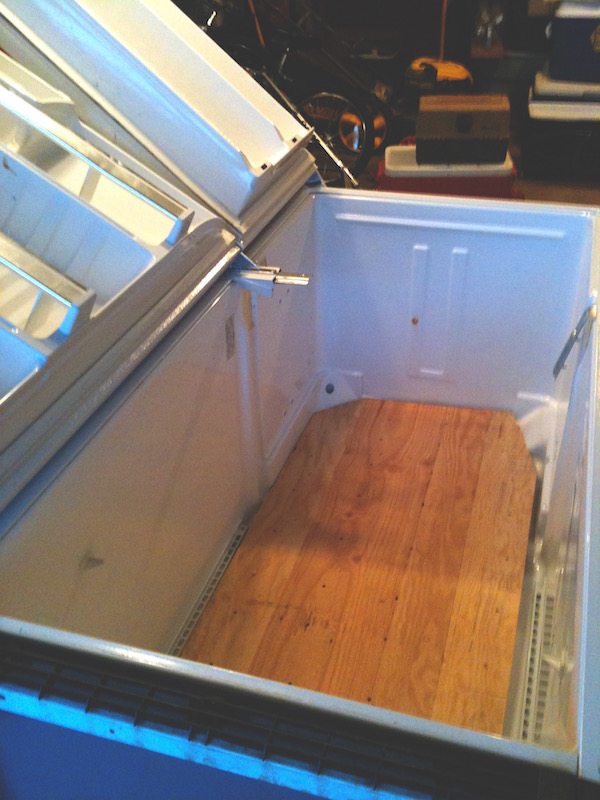
If it's an elk or larger, you will need to quarter the carcass before placing it in the homemade meat cooler.
Pack additional bags of ice around the entire carcass. Shut the door.
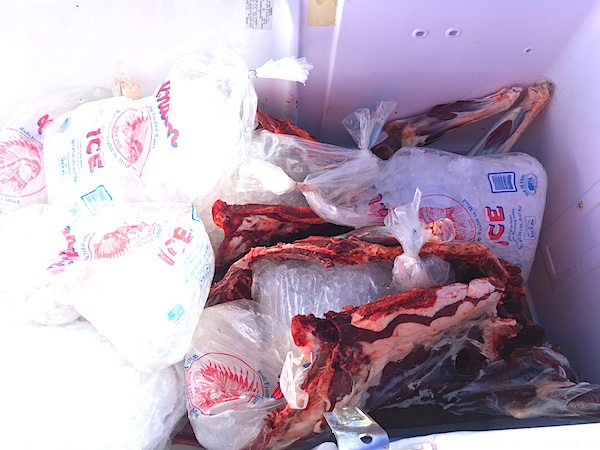
That's a slightly extreme version of the basic necessary steps, but just make sure you have a good cooler, that it's pre-cooled with ice, and that you get the meat inside it soon after it's finished drying.
Process it yourself.
Skinning and quartering are some of the first lessons you learn when entering the world of hunting, so why do so few of us still do it? Deboning and butchering your game meat is not nearly as difficult as some would make it seem.
Get a sharp knife (or even an entire butchering kit) and slice away the meat from the quarters as close to the bone as you can get. Some of the cuts can be separated and saved to use for steaks, roasts, or other things, but for the most part it just needs to be taken off the bone.
Eat the heart first, then the tenderloins and back straps. Put the rest of the meat in shrink wrapped plastic and toss it in the freezer.
Freeze the rest for use down the road, including ground meat for burgers or sausage, or slicing thin and smoking for jerky. You'll thank me later when you realize all the money you saved by skipping the deer processor.
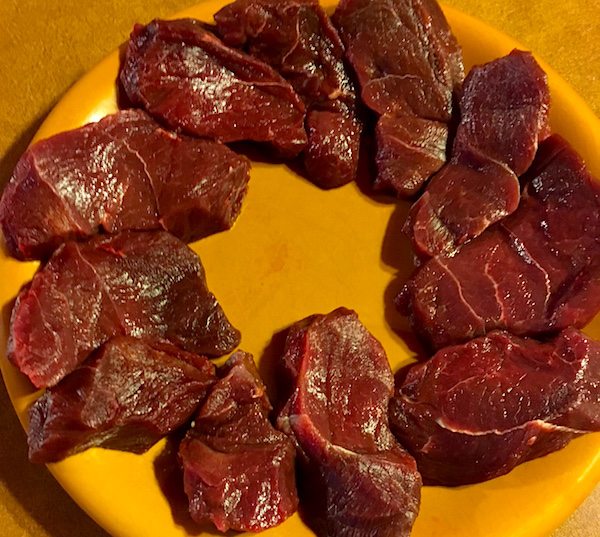
So there you go. To be a successful harvester of delicious venison that isn't tough and gamey, you have to make the extra effort and realize that just about everything you do throughout the planning process, the hunt and post-kill affects the taste of the meat.
Eliminate the variables that taint the flavor of the meat and you too can enjoy great venison all year long.
NEXT: VENISON QUESO DIP RECIPE: WILD GAME PARTY FOOD
WATCH
